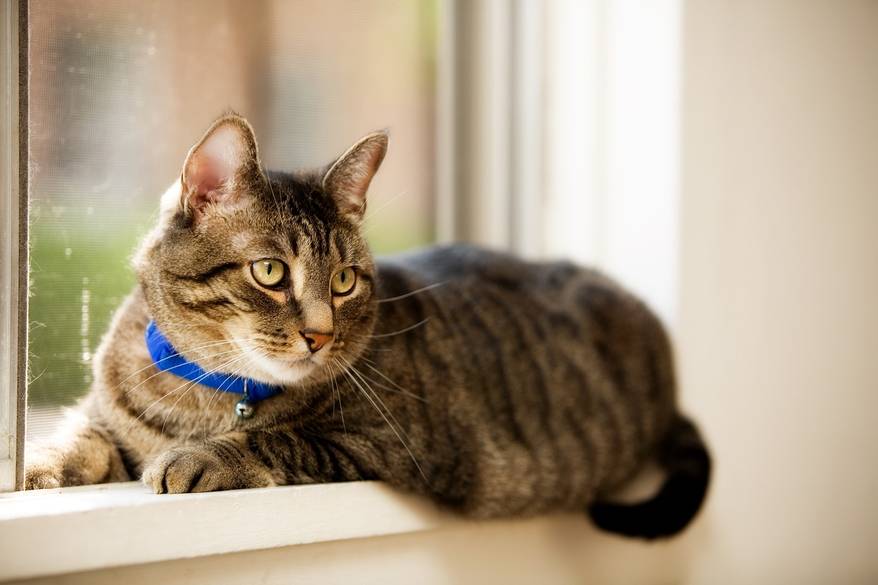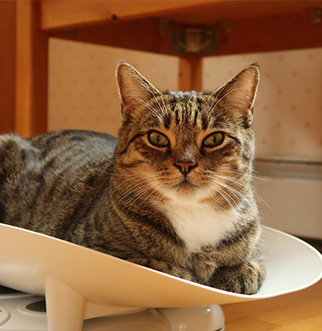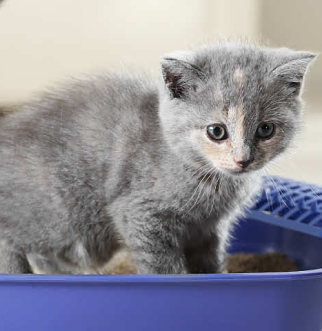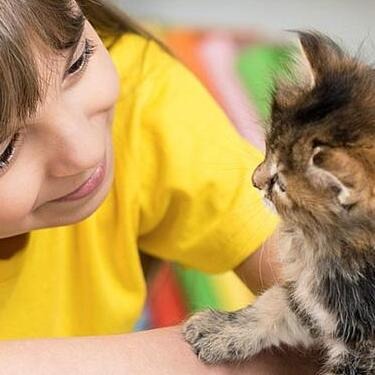
-
Find the right food for your pet
Take this quiz to see which food may be the best for your furry friend.
Find the right food for your pet
Take this quiz to see which food may be the best for your furry friend.
Featured products
 Adult Healthy Cuisine Roasted Chicken, Carrots & Spinach Stew Dog Food
Adult Healthy Cuisine Roasted Chicken, Carrots & Spinach Stew Dog FoodDelicious roasted chicken paired with tender vegetables in a succulent stew
Shop Now Small & Mini Savory Stew with Chicken & Vegetables Dog Food
Small & Mini Savory Stew with Chicken & Vegetables Dog FoodA delicious complement to the nutrition of Science Diet Small & Mini 7+ dog food
Shop Now Adult 7+ Perfect Digestion Chicken, Whole Oats & Brown Rice Recipe Dog Food
Adult 7+ Perfect Digestion Chicken, Whole Oats & Brown Rice Recipe Dog FoodScience Diet's breakthrough nutrition supports ultimate digestive well-being & healthy microbiome for dogs age 7+
Shop NowFeatured products
 Adult 7+ Tender Tuna Dinner Cat Food
Adult 7+ Tender Tuna Dinner Cat FoodWith delicious chunks in a decadent gravy
Shop Now Adult 7+ Senior Vitality Chicken & Vegetable Stew Cat Food
Adult 7+ Senior Vitality Chicken & Vegetable Stew Cat FoodImproves Everyday Ability to Get Up & Go
Shop Now Adult Savory Entrée Can Variety Pack Cat Food
Adult Savory Entrée Can Variety Pack Cat FoodPrecisely balanced nutrition with the delicious taste of savory minced chicken to help fuel the energy needs of cats during the prime of their life
Shop Now -
Dog
- Dog Tips & Articles
-
Health Category
- Weight
- Food & Environmental Sensitivities
- Urinary
- Digestive
- Joint
- Kidney
-
Life Stage
- Puppy Nutrition
- Adult Nutrition
- Senior Nutrition
Cat
- Cat Tips & Articles
-
Health Category
- Weight
- Skin & Food Sensitivities
- Urinary
- Digestive
- Kidney
-
Life Stage
- Kitten Nutrition
- Adult Nutrition
Featured articles
 Does My Pet Hate Me?
Does My Pet Hate Me?Learn tips for bonding with your pet if you've ever thought, 'My dog doesn't like me, or 'Why do I have a standoffish cat?'
Read More Do Dogs and Cats have Belly Buttons?
Do Dogs and Cats have Belly Buttons?Learn whether cats & dogs have belly buttons like humans, what the function is, and if there are any health concerns associated with it.
Read More Why Are Dogs and Cats So Cute?
Why Are Dogs and Cats So Cute?If waggy puppy dog tails and furry kitten yawns make you swoon, you're not alone. Why are cats so cute? And, dogs too! Let's find out!
Read More -

If you're new to this whole cat parent thing, you might be feeling a little intimidated. Even if this new kitty isn't your first, adopting a new cat can be both exciting and overwhelming. It's easy to overlook something that you or your kitty might need to make her life more comfortable, especially for her first few days and weeks with you. Be sure you and your new cat have everything you need by following these ten tips to help you be the best pet parent to your new feline friend.
Before She Arrives
Before you bring your new furry friend home, take the time to prepare your home, your family, and yourself to make her transition to her new life is a seamless one.
1. Remove Potential Toxins
This is an important step to ensure your kitty's safety. Cats jump, climb and fit into small spaces, so look high and low for anything that might present a hazard, including household cleaning agents and other chemicals. Don't forget house plants — many common plants, including begonias, peace lilies and lucky bamboo are toxic to cats if eaten, and unfortunately cats love to eat plants. The American Society for the Prevention of Cruelty to Animals (ASPCA) provides a comprehensive list of plants that are toxic to cats, but for the safety of both your new cat and your plants, it's best to relocate all plants and flowers so she won't be able to nibble on them.
2. Finish Cat-Proofing Your Home
A lot of cats like to chew on cords and string. This not only poses a choking hazard, but also an electrocution hazard if she tries to eat an electrical cord. Be sure to secure all power cords, as well as pull cords on curtains and blinds, yarn, sewing thread and needles, decorative tassels, and anything else resembling string. Go through the house and check for any openings that would let her crawl into duct work, attics, crawl spaces or anywhere else she might become trapped, and double check that they're securely covered. If you have a dog door, you should also make sure she won't be able to use it as an escape hatch. The ASPCA recommends installing sturdy screens on all windows if they don't already have them, and making sure garbage cans are secured with tight-fitting lids.
3. Talk to Your Family
If you share your home with others, make sure everyone's on board with getting a new cat, and determine ahead of time who will be responsible for duties like feeding her and cleaning the litter box. If you have kids, establish rules and talk to them about safe ways to play with the cat.
4. Prepare Your Other Pets
If your new cat won't be an only pet, you'll need to plan on how to handle introductions carefully. PetMD recommends familiarizing your current pets with the new girl by letting them sniff something she's slept on or interacted with before bringing her into the house. Prepare a safe, small space for her to spend her first few days in isolation, such as a bathroom, to allow her to get acclimated to her new surroundings in peace. This will provide her places where she can hide from unwanted attention from other household members.
5. Buy Necessary Supplies
Food and water dishes, a litter box and cat litter will only serve her most basic needs. A good cat parent will of course also want her to be happy and comfortable. For this, you'll need grooming supplies like a cat brush, cat shampoo and nail trimmers, a variety of cat toys and at least one cat bed. If you want her to stay off the furniture, you'll likely need a cat bed for each room. Consider providing a cat tree to give her an alternative to jumping on cabinets or tables in order to satisfy her urge to perch on high ground. Scratching posts or pads will also give her an alternative to sharpening her nails on the furniture or carpet.


Tasty Tips
6. Stock up on Quality Food
To avoid tummy troubles, it's best to switch her food slowly, so if possible, try to get a week's supply of what the shelter or breeder was feeding her, and gradually switch her to your preferred brand of balanced and nutritious cat food.
Once She's Home
In the days and weeks following your new cat's homecoming, taking these steps will help ease her into her new life and help you be the best pet parent she could ever want.
7. Schedule a Wellness Check
As soon as you can, have your veterinarian check your cat over and make sure she's up to date on her shots. Your vet can also help you determine whether she should be neutered for a variety of health and safety reasons. If you don't already have an established relationship with a vet, be sure to consult friends and family members in the area that are happy with their veterinary experience. Remember, besides you and your family, your vet is the most important person in your cat's healthiness and happiness.
8. Get Her Some Bling
Accidents happen no matter how careful you are. Should your kitty manage to get separated from you and become lost, a collar with an ID tag that includes your contact information will help improve your chances of being reunited. Many shelters also microchip pets before they leave the shelter, so it can also be a good idea to ask more about that program in case of an unexpected escape.
9. Start Lessons ASAP
Kittens and younger cats may need to be taught to use a litter box, and cats of any age will need to learn the house rules. Discourage unwanted behavior by interrupting kitty and distracting her with a loud noise, and reward her with treats when she does the right thing. Try placing strips of tape sticky side up on furniture and other surfaces you don't want her to scratch, and try using catnip to lure her to desirable objects, such as cat beds and scratching posts.
10. Exercise Her Body and Mind
Cats become bored easily, and a bored cat often becomes a mischievous cat. Cat toys will not only keep her entertained and engage her mind, but also help her stay fit. If possible, create a perch by a window where kitty can sit and watch birds, squirrels, and people. And let her hone her hunting instincts while getting some exercise by hiding treats and toys around the house for her to find.
At the end of the day, your new kitty just wants to feel secure and loved, which is the goal of every cat parent. By following the steps outlined here, you can relax knowing that all of her major needs are covered, and focus instead on bonding with your newest friend.


Jean Marie Bauhaus is a pet parent, pet blogger, and novelist from Tulsa, Oklahoma, where she usually writes under the supervision of a lapful of fur babies.
Related products
Related articles

What is the best food for an overweight cat? Learn all about weight control food for cats, including what's in it and how it works.

How do you get a cat to lose weight? Learn all about cat foods for weight loss, including how to choose weight control cat food and exercise tips.

Cats are naturally very clean and chances are your kitten will already have learned how to use the litter box from her mother before she comes to live with you.

Discover how to train your cat, starting with very basic first steps that both reward good behavior and discourage the bad.

Put your cat on a diet without them knowing
Our low calorie formula helps you control your cat's weight. It's packed with high-quality protein for building lean muscles, and made with purposeful ingredients for a flavorful, nutritious meal. Clinically proven antioxidants, Vitamin C+E, help promote a healthy immune system.
Put your cat on a diet without them knowing
Our low calorie formula helps you control your cat's weight. It's packed with high-quality protein for building lean muscles, and made with purposeful ingredients for a flavorful, nutritious meal. Clinically proven antioxidants, Vitamin C+E, help promote a healthy immune system.


